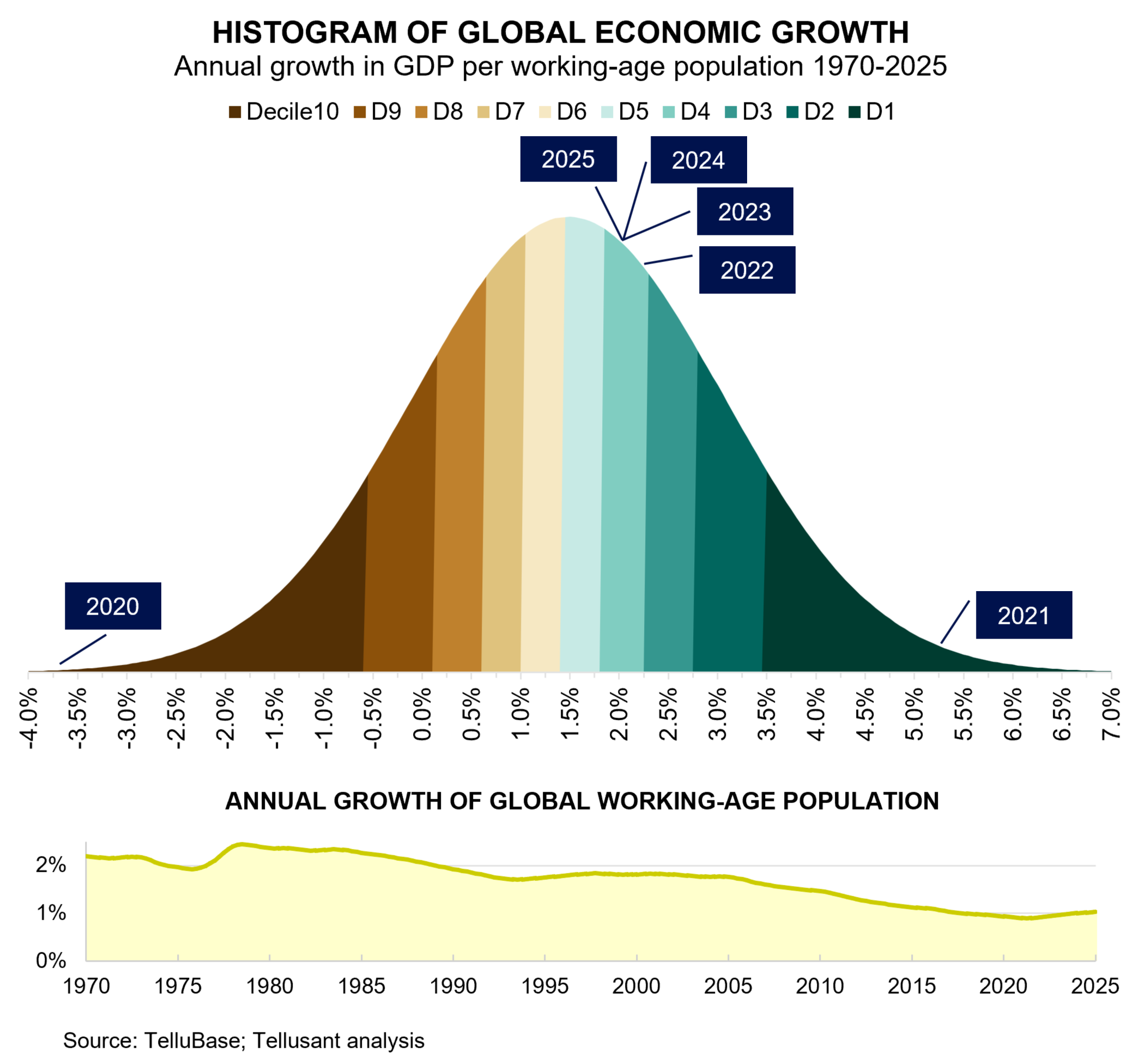The Global Economy in 2025
- Posted By:

The Global Economy in 2025
TelluBase has been updated with new forecasts for the global economy by country, city, and subdivision in 2025 and beyond.¹ We have aggregated this to the global level to compare 2025 with 1970-2024 in a histogram.
The graph shows that the 2025 growth in the global economy will be slightly better than average and in line with recent years. 2025 is in the 5th decile from the top and ranks 18th among 55 years. This is a satisfactory performance.
 We make the crucial adjustment of calculating GDP growth per working-age person (and not total GDP growth or GDP per capita growth).
We make the crucial adjustment of calculating GDP growth per working-age person (and not total GDP growth or GDP per capita growth).
The working-age population is what generates GDP (together with capital). We anticipate lower GDP growth now because the working-age population growth has halved since the 1990s.. With the adjustment, we can see the true development.
A conclusion is that the economic growth is normal; the larger issues are demographic changes with declining and aging populations.
Add 1 percentage point to the highlighted years in the graph to get the approximate full GDP growth.
Purchasing power parity (PPP) weights are used to sum up the individual countries to the global level.
Another update is due in May, 2025. We update TelluBase twice a year with ad hoc updates more often if called for.
ABOUT TELLUBASE
TelluBase is the external information hub every company and organization needs. It is the only database in world that breaks down consumer groups by classes and age level across countries, cities, subdivisions, and years.
TelluBase covers 218 countries, 2600 cities, 2500 primary subdivisions (and 25000 secondary subdivisions, including the Nigerian LGAs) for 2000–2050.
This unique database allows you to understand and quantify consumer economics at a granular level beyond what is possible today.
For a deeper description of TelluBase, go here. You can also visit the dedicated TelluBase site where you can subscribe to the data.
To learn more about our economic insights, TelluBase or PoluSim, please fill in this form . Alternatively, send an email to info@tellusant.com.
ABOUT POLUSIM
We also offer the enterprise strategic forecasting solution PoluSim which incorporates TelluBase automatically.
It provides a single location to interact with universally consistent sales and demand driver data, to view statistically robust and managerially relevant outlooks, and to plan scenarios for sales at a monthly and yearly level.
We have deployed PoluSim in more than 100 countries.
¹ This includes new data from World Economic Outlook (WEO) by the International Monetary Fund and the USDA Economic Research Service‘s International Baseline Data.